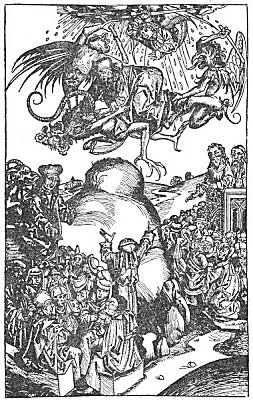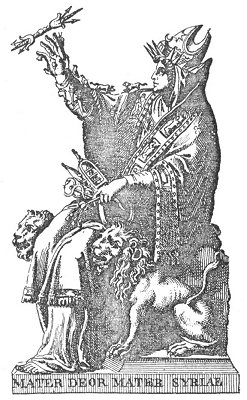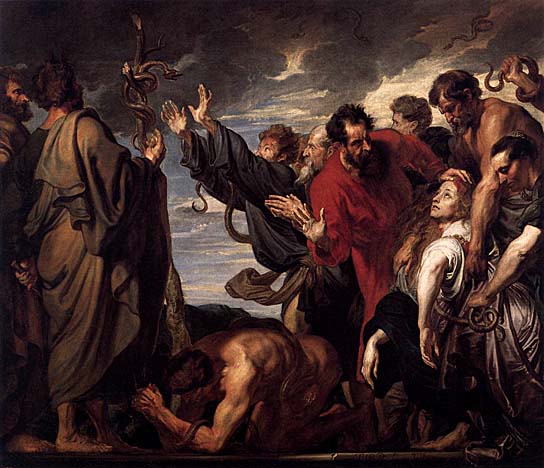p. 29
THE most famous of the ancient religious Mysteries were the Eleusinian, whose rites were celebrated every five years in the city of Eleusis to honor Ceres (Demeter, Rhea, or Isis) and her daughter, Persephone. The initiates of the Eleusinian School were famous throughout Greece for the beauty of their philosophic concepts and the high standards of morality which they demonstrated in their daily lives. Because of their excellence, these Mysteries spread to Rome and Britain, and later the initiations were given in both these countries. The Eleusinian Mysteries, named for the community in Attica where the sacred dramas were first presented, are generally believed to have been founded by Eumolpos about fourteen hundred years before the birth of Christ, and through the Platonic system of philosophy their principles have been preserved to modern times.
The rites of Eleusis, with their Mystic interpretations of Nature’s most precious secrets, overshadowed the civilizations of their time and gradually absorbed many smaller schools, incorporating into their own system whatever valuable information these lesser institutions possessed. Heckethorn sees in the Mysteries of Ceres and Bacchus a metamorphosis of the rites of Isis and Osiris, and there is every reason to believe that all so-called secret schools of the ancient world were branches from one philosophic tree which, with its root in heaven and its branches on the earth, is–like the spirit of man–an invisible but ever-present cause of the objectified vehicles that give it expression. The Mysteries were the channels through which this one philosophic light was disseminated, and their initiates, resplendent with intellectual and spiritual understanding, were the perfect fruitage of the divine tree, bearing witness before the material world of the recondite source of all Light and Truth.
The rites of Eleusis were divided into what were called the Lesser and the Greater Mysteries. According to James Gardner, the Lesser Mysteries were celebrated in the spring (probably at the time of the vernal equinox) in the town of Agræ, and the Greater, in the fall (the time of the autumnal equinox) at Eleusis or Athens. It is supposed that the former were given annually and the latter every five years. The rituals of the Eleusinians were highly involved, and to understand them required a deep study of Greek mythology, which they interpreted in its esoteric light with the aid of their secret keys.
The Lesser Mysteries were dedicated to Persephone. In his Eleusinian and Bacchic Mysteries, Thomas Taylor sums up their purpose as follows: “The Lesser Mysteries were designed by the ancient theologists, their founders, to signify occultly the condition of the unpurified soul invested with an earthy body, and enveloped in a material and physical nature.”
The legend used in the Lesser rites is that of the abduction of the goddess Persephone, the daughter of Ceres, by Pluto, the lord of the underworld, or Hades. While Persephone is picking flowers in a beautiful meadow, the earth suddenly opens and the gloomy lord of death, riding in a magnificent chariot, emerges from its somber depths and, grasping her in his arms, carries the screaming and struggling goddess to his subterranean palace, where he forces her to become his queen.
It is doubtful whether many of the initiates themselves understood the mystic meaning of this allegory, for most of them apparently believed that it referred solely to the succession of the seasons. It is difficult to obtain satisfactory information concerning the Mysteries, for the candidates were bound by inviolable oaths never to reveal their inner secrets to the profane. At the beginning of the ceremony of initiation, the candidate stood upon the skins of animals sacrificed for the purpose, and vowed that death should seal his lips before he would divulge the sacred truths which were about to be communicated to him. Through indirect channels, however, some of their secrets have been preserved. The teachings given to the neophytes were substantially as follows:
The soul of man–often called Psyche, and in the Eleusinian Mysteries symbolized by Persephone–is essentially a spiritual thing. Its true home is in the higher worlds, where, free from the bondage of material form and material concepts, it is said to be truly alive and self-expressive. The human, or physical, nature of man, according to this doctrine, is a tomb, a quagmire, a false and impermanent thing, the source of all sorrow and suffering. Plato describes the body as the sepulcher of the soul; and by this he means not only the human form but also the human nature.

Moe is the founder of GnosticWarrior.com. He is a father, husband, author, martial arts black belt, and an expert in Gnosticism, the occult, and esotericism.





